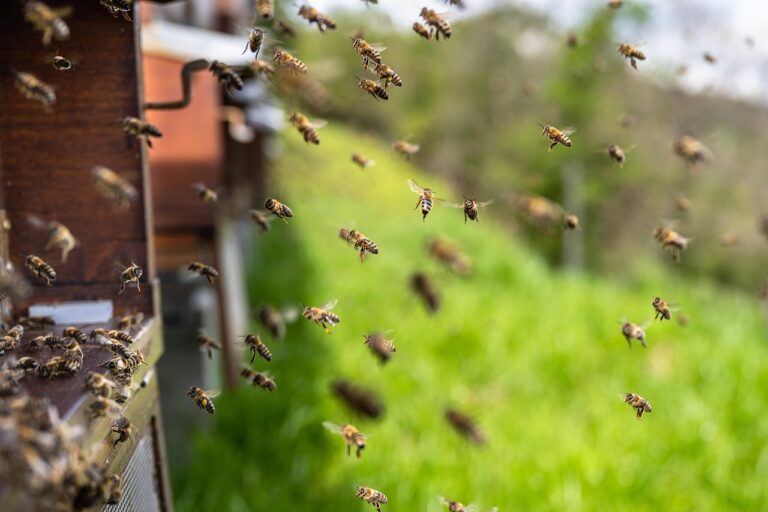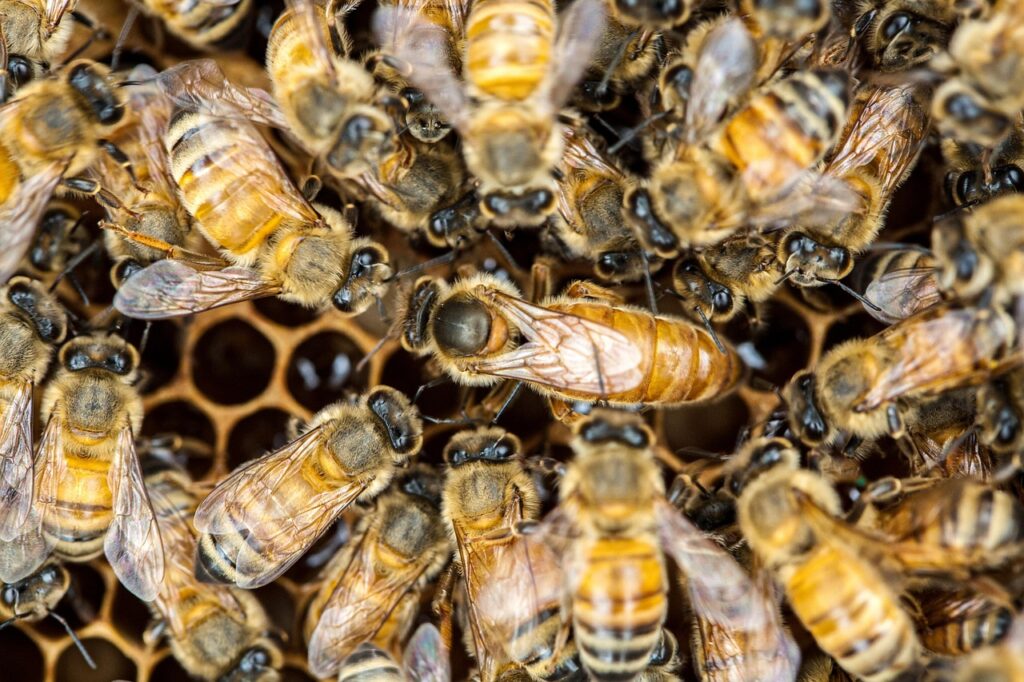Let’s see how you do with this Advanced Honey Bee Knowledge Quiz
Test your in-depth understanding of bee biology, behavior, and beekeeping. These questions are designed for an experienced enthusiast or beekeeper!
1. What is the primary chemical component of royal jelly?
a) Sugars
b) Proteins
c) Fats
d) Minerals
2. Which hormone in bee larvae determines whether a developing bee will become a queen or a worker?
a) Juvenile hormone
b) Ecdysone
c) Royalactin
d) Melatonin
3. What specialized structure do honey bees use to transport pollen on their hind legs?
a) Clypeus
b) Scopae
c) Corbiculae (pollen basket)
d) Tarsus
4. In honey bee genetics, what type of egg produces a drone?
a) Fertilized diploid
b) Fertilized triploid
c) Unfertilized haploid
d) Unfertilized diploid
5. What is the function of the Nasonov gland in worker bees?
a) Produces venom for the stinger
b) Secretes wax for comb-building
c) Emits pheromones for orientation and recruitment
d) Produces digestive enzymes
6. Which task is NOT typically performed by newly emerged worker bees within their first week of life?
a) Cleaning cells
b) Guarding the hive entrance
c) Nursing brood
d) Feeding the queen
7. What physiological mechanism allows honey bees to control the internal temperature of the brood nest?
a) Evaporative cooling by water
b) Fanning wings and clustering
c) Digestive heat production
d) Wax insulation
8. How does polyandry (queens mating with multiple drones) benefit the honey bee colony?
a) Increases honey production
b) Promotes genetic diversity, enhancing disease resistance
c) Prolongs colony lifespan
d) Reduces drone population
9. Which of the following is a key difference between honey bees (Apis mellifera) and wasps?
a) Only bees produce wax and honey
b) Wasps are more hairy than bees
c) Only wasps have barbed stingers
d) Honey bees lack pollen baskets
10. Where is royal jelly produced in the worker bee’s body?
a) Abdomen
b) Hypopharyngeal glands in the head
c) Mandibular glands
d) Thoracic glands
Answers
- b) Proteins – Royal jelly is rich in proteins, crucial for queen larva development[1].
- c) Royalactin – This protein triggers queen development in larvae fed exclusively royal jelly[2].
- c) Corbiculae (pollen basket) – These are specially adapted structures on the hind legs for carrying pollen[2].
- c) Unfertilized haploid – Drones develop from unfertilized (haploid) eggs[1][2].
- c) Emits pheromones for orientation and recruitment – The Nasonov gland helps bees orient and attract nestmates[1].
- b) Guarding the hive entrance – Guarding usually begins after about 2-3 weeks; younger workers clean and nurse first[2].
- b) Fanning wings and clustering – Workers fan wings to cool and cluster to warm the nest as needed[2].
- b) Promotes genetic diversity, enhancing disease resistance – Multiple mating increases genetic variability in the colony, boosting resilience[2].
- a) Only bees produce wax and honey – Wasps do not produce honey or wax, unlike bees[2].
- b) Hypopharyngeal glands in the head – Specialized glands in the worker bee’s head secrete royal jelly[1].
Challenge yourself further or let me know if you want explanations for any of the answers!
⁂



